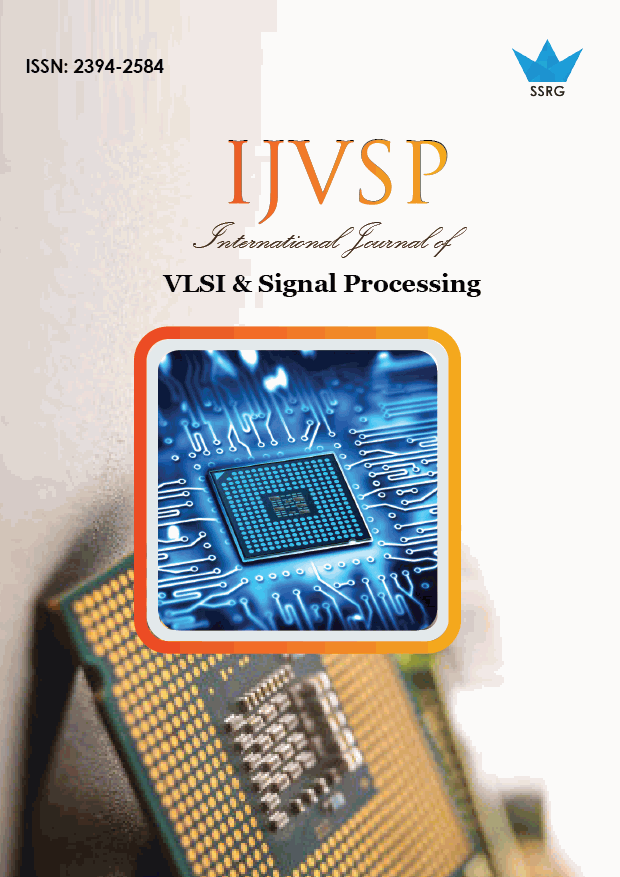A Review on Boundary Detection Techniques in Authentic Region

| International Journal of VLSI & Signal Processing |
| © 2016 by SSRG - IJVSP Journal |
| Volume 3 Issue 1 |
| Year of Publication : 2016 |
| Authors : Dr.S.Vishnuvarathan and Sri Divya |
How to Cite?
Dr.S.Vishnuvarathan and Sri Divya, "A Review on Boundary Detection Techniques in Authentic Region," SSRG International Journal of VLSI & Signal Processing, vol. 3, no. 1, pp. 9-11, 2016. Crossref, https://doi.org/10.14445/23942584/IJVSP-V3I1P103
Abstract:
Image authentication is a tedious process researchers have been established for new technical solutions for image authentication, in recent times started expansion of new methods aiming at blind passive detection of image splicing. Conversely, many other research societiesdealing with data processing need tocollect an open data set with various content and realistic splicing conditions in order to expedite the progresses and facilitate collaborative studies. A skilledimage editor can be done an image splicing process by verification of image authentication has become important. In this paper, we suggest a detection method for splicing boundaries that uses consistency on camera response function (CRF) in an image. The uniformity of CRF is detected as differential features. In some images, the non-uniformity of CRF typically appears on the edges of a splicing region. The physical appearance of CRF taken out from edges in an image differsamong a transformed region and an authentic region. The QR map is used to analyze the topographies that represent the relation between this features and image intensity. In common the CRF has an authentic boundary within an image, but a splicing boundary is not available.
Keywords:
Image authentication, CRF, image splicing boundary, QR map.
References:
[1] J. Takamatsu, Y. Matsushita, and K. Ikeuchi, “Estimating camera response functions using probabilistic intensity similarity,” in Proc. IEEE Int’l Conf. Computer Vision and Pattern Recognition,Jun. 2008, pp.1-8.
[2] D. Grossberg and S. K. Nayar, “What is the space of camera response functions,” in Proc. IEEEInt’lConf. Computer Visionand Pattern Recognition, Jun. 2003, pp. 602-609.
[3] S. Lin, G. Jinwei, S. Yamazaki, and S. Y. Heung: “Radiometric calibration from a single image,” in Proc. IEEEInt’lConf.Computer Vision and Pattern Recognition, Jun./Jul. 2004, pp. 938-945.
[4] T. T. Ng, “Statistical and geometric methods for passiveblind image forensics,” PhD Thesis, Graduate School of Arts and Sciences, Columbia Univ., May 2007.
[5] Y. F. Hsu and S. F. Chang, “Camera response functions for image forensics: An automatic algorithm for splicing detection,” IEEETrans. on Information Forensics and Security, vol. 5, no. 4, pp.816-825, Dec. 2010.
[6] T. T. Ng, S. F. Chang, M. P. Tsui, “Using geometry invariants for camera response function estimation,” in Proc. IEEEInt’lConf.Computer Vision and Pattern Recognition, Jun. 2007, pp. 1-8.
[7] T. T. Ng and S. F. Chang, “Camera response function estimation from a single-channel image using differential invariants,” ADVENT Technical Report #216-2006-2, Mar. 2006.
[8] Y. F. Hsu and S. F. Chang, “Detecting image splicing using geometry invariants and camera characteristics consistency,” in Proc. Int’l Conf. on Multimedia and Expo, Jul. 2006, pp.549-552

 10.14445/23942584/IJVSP-V3I1P103
10.14445/23942584/IJVSP-V3I1P103